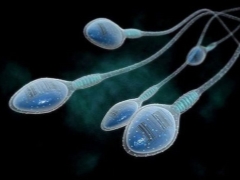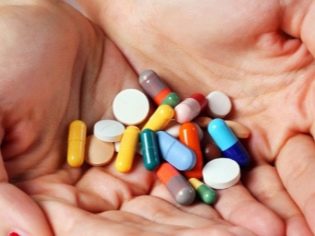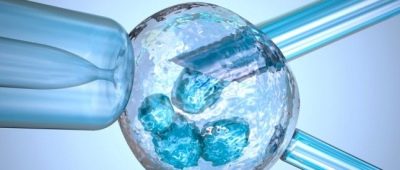What is asthenozoospermia and how does it affect conception?
Male reproductive health is a rather fragile thing. A variety of factors can negatively affect the ability of a man to fertilize. There are many forms of male infertility. About one of them - asthenozoospermia, we will talk in this material. What is this disease and how does it affect the likelihood of pregnancy?
Characteristic
Asthenozoospermia is a pathological state of reproductive health of men, in which an insufficient number of motile and active spermatozoa is detected in the ejaculate. At the same time, the number of live sperm cells may well correspond to the norm, but the purposeful cells able to move quickly in a straight line are insufficient.
For successful fertilization of the egg, it is important that the male sex cells are morphologically healthy, not modified, so that they have the right structure, but it is equally important that they move in the direction given by nature as quickly as possible. Slow spermatozoids are mostly doomed to die in the acidic environment of the vagina or when the cervical canal passes through the cervix. To reach the ampular part of the fallopian tube, where the egg cell is ready for fertilization during the period of ovulation, such spermatozoids have almost no chance.
Quite often, asthenozoospermia in men occurs in its purest form. Often it is combined with teratozoospermia - a violation of the morphological properties of sperm (the presence of two heads or two tails in one cell, a violation of the structure of any part of the sperm). In addition, asthenozoospermia is combined with increased viscosity of sperm, agglutination (gluing germ cells together). This pathology can be concomitant with other forms of male infertility.
A man who has heard such a diagnosis should not despair. Despite the seriousness of the situation, asthenozoospermia is not among the total lesions of the reproductive system, it is well treatable, of course, with timely medical attention and strict adherence to all medical recommendations.
Classification
To understand how significant the deviation from the norm is, one should know that all spermatozoa, without exception, are divided into 4 large groups according to their ability to move. Group A sex cells are the most active and mobile, they are called progressive. They move quickly, the vector of their movement is straight. Such cells are able to get to the egg and make fertilization.
Group B sex cells are also quite suitable for conception. From the first category of sperm they differ only in speed - it is slightly lower. But the motion vector is direct, which means that such cells can also reach their destination, but a little later.
Spermatozoa group C live and mobile. But they are unfit for fertilization, since they move along an irregular trajectory - either in a circle, or in the opposite direction, or “treading water” in one place. They cannot reach the egg cell.
Cells of group D are fixed. They may be alive, but for a number of reasons they are not capable of movement, or they may be dead.In the race for the right of fertilization, they do not participate at all.
Any man in the ejaculate has cells from different groups, since this is a feature of spermatogenesis - some cells die, others, younger ones, replace them. However, a healthy man is considered to be in which the cells of categories A and B dominate in the ejaculate. It is good if there are at least 50% of the total number of sperm cells. Sometimes only type A cells are counted, they should be at least 25% from a healthy man capable of natural fertilization.
These are the norms, and everything that does not fit into them is called asthenozoospermia. Depending on the severity of the disease, several degrees of illness are determined:
1 degree. This is a moderate degree of pathology, insignificant, in which the content of motile and progressive germ cells in the ejaculate is reduced to 40%. Theoretically, this amount may be enough to conceive a baby, the chances of becoming pregnant are not significantly reduced. The cunning of the first degree of asthenozoospermia is that, without timely correction, the tendency to decrease in the activity of spermatozoa may progress.
2 degrees. This degree conditionally refers to moderate, but the number of motile and active cells in the ejaculate has already been reduced to 30-35%. In other words, only a third of the sperm are able to reach the egg. The probability of conception is reduced, but not critical. This degree needs treatment.
3 degrees. This is a pronounced pathology, in which fast and motile spermatozoa capable of fertilization in the male ejaculate is less than 30%. Independently becoming pregnant with a couple with such a diagnosis is quite difficult. Without medical care in this case is not enough.
Impact on fertilization
As already mentioned, asthenozoospermia is not a total pathology. The higher the degree of illness, the less likely the spouses will become parents in a natural way, but they are not zero. In the absence of treatment of the first degree of illness, theoretically, conception is possible, as in the second degree. You can get pregnant even with the third degree of the disease, but the chances are very slim. They are estimated at about 2-3%.
For the prognosis, not only the number of progressive and motile cells in the ejaculate is important, but also the number of immobile and sedentary sperm. Only a comprehensive assessment allows you to judge the fertility of men.
Proper treatment allows normalizing the composition of sperm for 6-9 months, increasing the number of motile cells, thereby increasing the chances of conception. Much depends on the focus of the spouses on the result and their compliance with the recommendations.
Causes
Asthenozoospermia can be caused by a great variety of individual causes and their combination. For successful treatment, it is important to establish the root causes, because their elimination is the basis of therapy. Causes can be external, internal (pathological) and physiological.
External
External causes of men, as a rule, are created by themselves - through inexperience, ignorance or negligence. This is especially true for those who like to take a steam bath or sit with friends in a sauna for a few hours. Long lying in a bath filled with hot water also has a negative effect on sperm motility.
Nature has "taken out" the testicles of men outside the body, providing for them a special skin pouch - scrotum, it maintains a cooler temperature, below the level of body temperature. With her spermatogenesis proceeds without problems. If the scrotum overheats in a bath or sauna, if a man often uses car heated seats, the number of healthy and motile germ cells decreases several times.
This should be remembered and lovers to wear tight fitting underwear, and fitting pants.During an illness on the background of high fever, the testicles also heat up, and therefore, during 2-3 months after the illness, the motility of the germ cells is reduced.
If the conditions for the development of new young sperm are favorable, there are no overheating factors, then the new cells will be replaced by sedentary cells during this period, and fertility will fully recover.
A common external cause of asthenozoospermia is smoking and alcohol addiction. Most of the representatives of the stronger sex believe that a beer in the evening and marijuana in reasonable amounts will not harm their health. Let us hasten to disappoint: more than half of all cases of asthenozoospermia in combination with a violation of the sperm morphology are observed in men who cannot be called drinkers, but who take small amounts of alcohol every evening or every other day.
With the systematic use of marijuana male fertility declines in six months. If he does not say goodbye to this harmful habit, asthenozoospermia progresses. Drugs and alcohol, like nicotine, destroy the structure of germ cells, cause mutations, paralyze the tail of the spermatozoon, thereby reducing cell mobility. Another danger lies in the fact that conception can still take place. If the sperm is modified, then such a pregnancy is not likely to end up with anything good - a miscarriage will occur, a missed pregnancy, a child with gross chromosomal abnormalities may be born.
Medication is also related to external causes of asthenozoospermia. Antibiotics, antiepileptic and hormonal agents have the most destructive effect on the motility of germ cells. Some men who are professionally involved in sports use steroid hormones, which also suppresses the production of young, strong sperm.
A common cause of asthenozoospermia is poor diet. If a man believes that a hamburger or shawarma is an acceptable lunch, and canned food and carbonated drinks, like strong coffee, have a right to exist on his table, then you should not be surprised at the decrease in sperm activity. Preservatives and dyes, chemical additives, which are abundantly contained in such food, violate the initial cycles of spermatogenesis, the cells mature already unhealthy, damaged.
External causes of asthenozoospermia are diverse, they often lie in the profession of the representative of the stronger sex - chemical production, work in the paint shop, in conditions of radiation, contact with salts of heavy metals increase the likelihood of severe severe asthenozoospermia. Separately, experts distinguish psychological infertility.
Men who are long exposed to severe stress, working under stress, are more often affected by infertility than men who know how to control their feelings and emotions, relax and fully relax.
Physiological
Spermatozoa are quite susceptible to the general well-being of their "owner", as well as to his environment. This is due to the majority of physiological reasons for the development of the so-called natural asthenozoospermia. Its difference from other types of the disease is temporary. Usually such a violation passes on its own, and sometimes it does not even require any correction.
Against the background of a natural decline in immunity and avitaminosis, in the spring of sperm become less mobile. Human biological rhythms dictate a certain order of life to the sex cells, which is why in the morning sperm cells are slower and “lazy” than in the evening. If a man for a long time abstains from sexual intercourse and masturbation, the mobility of his germ cells decreases several times, sperm becomes more dense and viscous, and spermatozoa agglutinate.
If the representative of the stronger sex leads to frequent and active sex life, the number of progressive and motile spermatozoa increases.
Pathological
These causes without medical intervention will not disappear by themselves. That is why a man and need to undergo a comprehensive examination. Often, the activity and mobility of germ cells is reduced due to the presence of prostatitis or varicocele. Inflammation of the epididymis (epididymitis) also almost always leads to the appearance in the ejaculate of a large number of immobile and even non-viable spermatozoa.
Genital infections and sexually transmitted diseases are the most common cause of pathological asthenozoospermia. In this case, it is far from always the man realizes that he is the carrier of this or that ailment. So, many "winged" infections (chlamydia, ureaplasma) are hidden, and only laboratory tests can show their presence.
Sometimes the immunity of a man is “guilty” in the development of asthenozoospermia. So the natural protection of his body can react to old injuries of the scrotum or penis. Who among men has not fought at least once? There are few. But even a small injury over the years can lead to the production of antisperm antibodies. So immunity will try to destroy healthy and motile germ cells by “mistake”.
Sperm cells also become sedentary in men with hormonal disorders, overweight, obesity, and also in men who lead a low-active, predominantly sedentary lifestyle.
A separate topic for conversation is the genetic born pathologies of sperm, in which the sperm initially do not have the opportunity to move due to the violation of the structure, for example, a fixed, paralyzed tail. Such pathologies medicine has not yet learned to treat. If a genetic abnormality is confirmed, the man is considered infertile. The good news is that such pathologies are very rare. And with each there are options for the use of assisted reproductive technologies.
Diagnostics
The only way to establish such a diagnosis as asthenozospremiya is to have a spermogram. This analysis can be done in any reproduction center, in private and public clinics, in family planning centers. It is inexpensive, done in a day.
Before donating sperm, a man should abstain from sexual intercourse for 4-5 days. It is important to make sure that at the time of delivery of spermogram her husband does not have the flu, acute respiratory viral infections and other diseases, that for the past three months he has not taken hormonal drugs and antibiotics.
You can take a sample of ejaculate in the clinic through masturbation in a separate room, and you can collect the material at home in a sterile biomaterial jar, which can be purchased at any pharmacy. It is important to deliver the sperm to the laboratory within 40-45 minutes from the moment of ejaculation.
Treatment
Treatment of asthenozoospermia is always complex. It is not limited to taking the medication prescribed by a doctor; correction of the whole lifestyle of a man is required. If the degree of the disease is insignificant (the first or second), it can be limited only to the correction of lifestyle. A man should say goodbye to fast food, alcohol, reduce the amount of tobacco consumed or quit smoking altogether. Proper nutrition will help to reduce weight, if such a problem exists, and also normalizes metabolism.
Excessive physical activity is contraindicated for a man, but his lifestyle should be quite active. In other words, you should not tear the veins in the gym, lifting the barbell, but jogging before going to bed or walking, while skiing will bring many benefits. Particular attention should be paid to sleep. You need to sleep at least 8 hours and always at night. It is at night in the body of a man that a large amount of hormones is produced, many of which are involved in the processes of reproduction and spermatogenesis.If work is associated with night shifts, it is better to find another job or switch to a different work schedule with the phrase “for health reasons”.
Residents of large and polluted cities should go on vacation, live in the countryside or by the sea, where the ecological situation is more prosperous.
To combat chronic stress, you can contact a specialist - a psychotherapist or a psychologist. A lot depends on the positive attitude of the man himself and his desire to improve his own reproductive health.
The motility of germ cells will help to increase the systematic and prolonged (at least 3-6 months) intake of special preparations to improve spermatogenesis. These are vitamin preparations and combined dietary supplements containing vitamins A, C, E, folic acid, zinc, selenium and iron. The best known and most effective drugs are Spermaktiv, Spermaplant, Proffertil, and Viardo Forte.
Such treatment in most cases helps to cope with asthenozoospermia for six months, two cycles of spermatogenesis (each lasting about 3 months) is enough to judge the first results. Such a therapeutic approach is effective in most cases, with the exception of asthenozoospermia caused by infections and inflammatory processes. In this case, the man first recommended a course of antibiotics and anti-inflammatory drugs, and then - the above-mentioned universal scheme with vitamins, dietary supplements and the correction of the daily routine.
The most difficult treatment is asthenozoospermia, caused by autoimmune causes. Prescribed drugs that belong to the group of immunosuppressants that suppress excessive aggression of the immune system. But they do not always help, and then, as in cases with congenital genetic causes, a man is recommended, together with his wife, to turn to reproduction specialists for IVF using their own or donor sperm.
Modern medicine can artificially fertilize a female egg with a living, but immobile sperm of a husband, and sometimes even from a completely dead germ cell, it is possible to extract genetic material for fertilization in the laboratory. Therefore, do not despair. There are always chances of becoming a dad.
Folk remedies to improve the quality of sperm, humanity has been used for many centuries. But such therapy should not go against the recommendations of the attending physician. Before applying a prescription of alternative medicine, it is best to always ask what your doctor thinks about it. The most popular among the people means - pumpkin juice in the morning on an empty stomach, honey and bee products, rosehips, nine-strength herb and decoctions and infusions from it.
Treat asthenozoospermia patiently and comprehensively. In the diet of men should every day be foods rich in animal protein - meat, fish, cottage cheese, poultry. The disease responds well to correction, it is possible to cure up to 95% of all cases.
Reviews
According to reviews, many couples who were prescribed treatment for asthenozoospermia, managed to become pregnant within the first three months from the start of therapy. If this does not happen, you should not despair, because about 30% of successful conception cases occur within the second three months.
Systematic intake of vitamins and dietary supplements is not easy given to optional men. Therefore, the process of treatment must be followed by a woman, otherwise the husband will simply forget about taking the pill or another examination.
How to treat asthenozoospermia, see the next video.






































